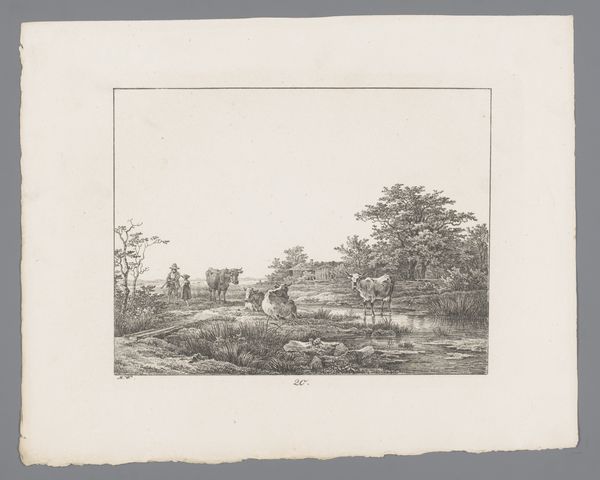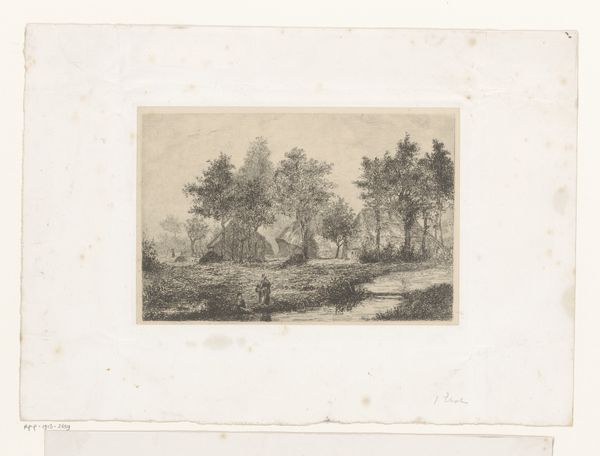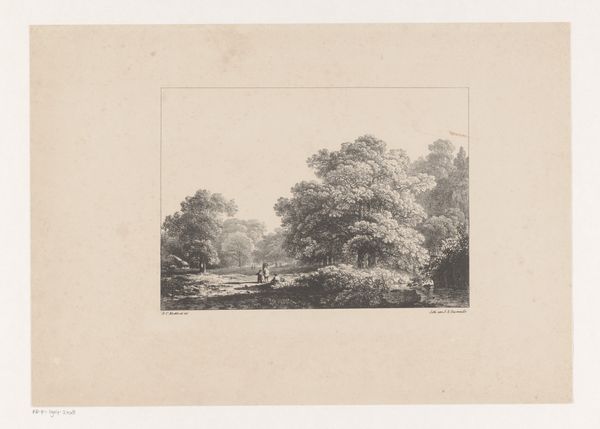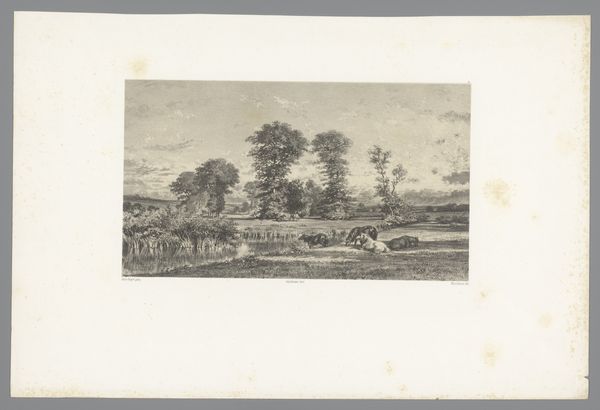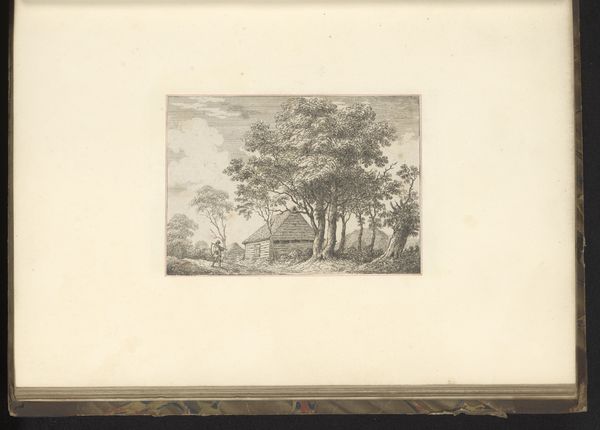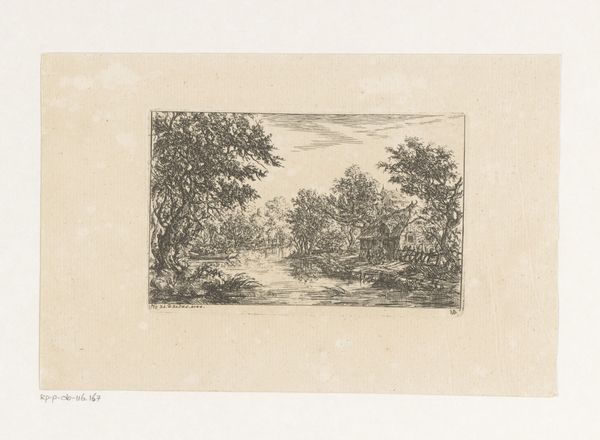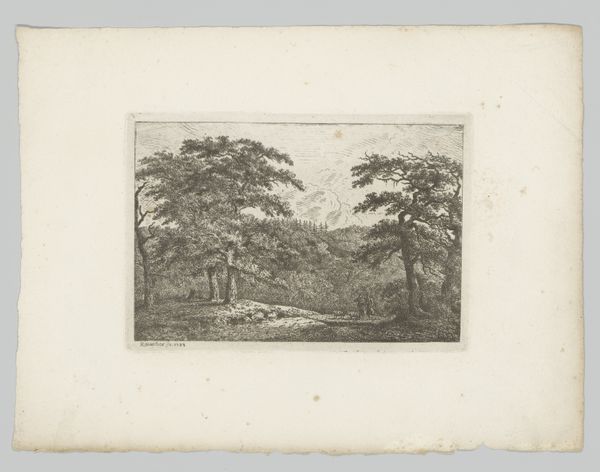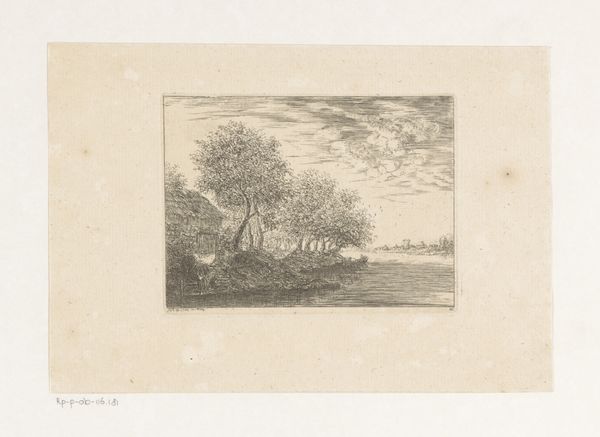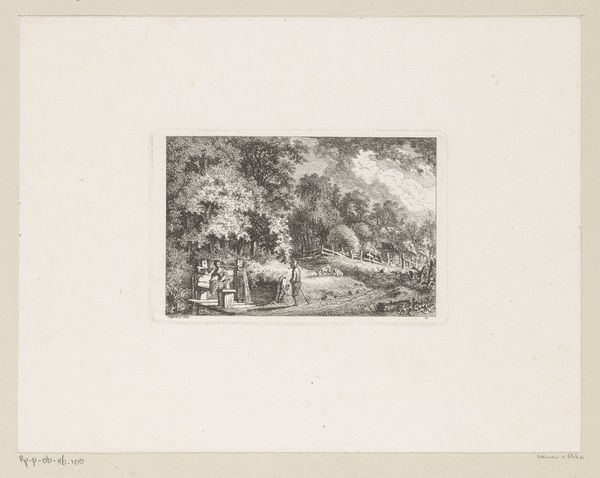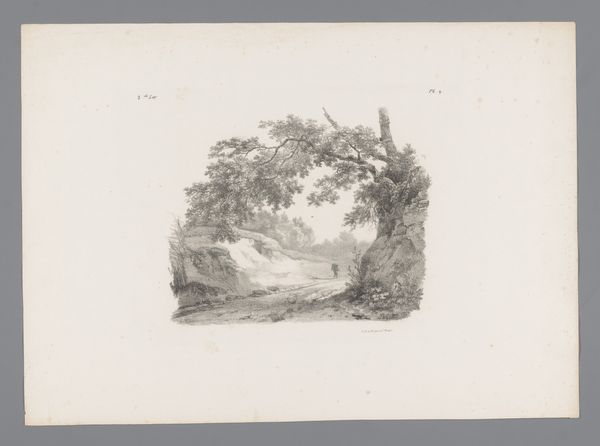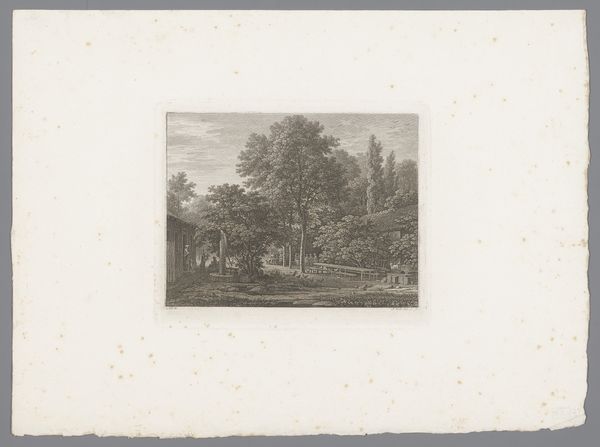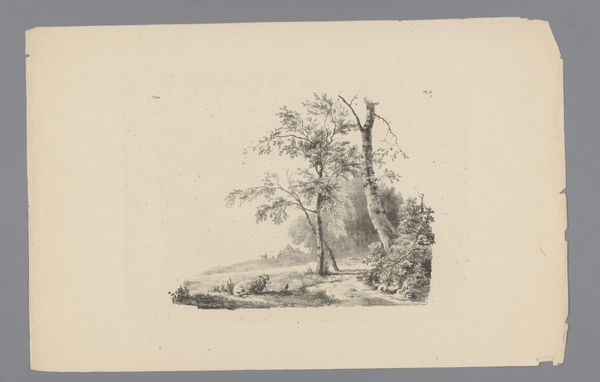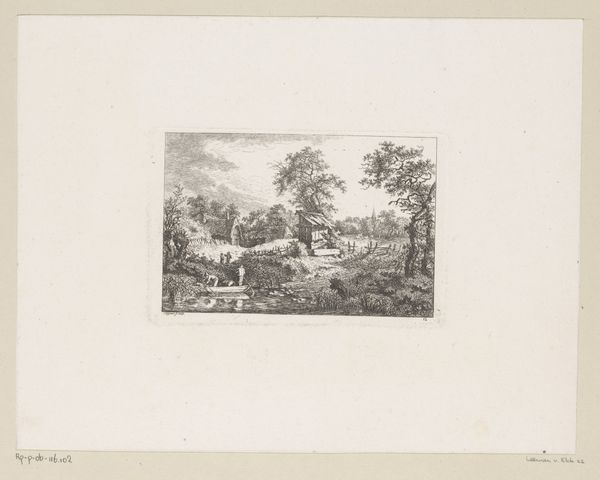
drawing, ink
#
drawing
#
landscape
#
ink
#
line
#
realism
Dimensions: height 370 mm, width 286 mm
Copyright: Rijks Museum: Open Domain
Editor: So, this is *Landschap met bomen*, or Landscape with Trees, by Max Josef Wagenbauer, dating back to 1823. It’s an ink drawing, and what strikes me is the intricate linework used to create a seemingly simple scene. What narratives do you see embedded within this landscape? Curator: I see a dialogue, a tension even, between romantic idealism and the realities of agrarian life in the 19th century. Consider the deliberate placement of the fence, not just as a marker of property, but a literal barrier. Does this border serve to protect or confine, and what does that say about Wagenbauer’s own social perspective? Editor: That’s a really interesting point, I hadn't considered the fence as more than a compositional element. Do you think the absence of figures adds to this reading? Curator: Absolutely. The lack of human presence directs our gaze towards the land itself. The rolling hills are rendered almost uniformly, denying a sense of true rural freedom, it's less about freedom and more about duty. The Romantic landscapes are typically understood as reflections of an individual's soul; where do we see Wagenbauer positioned? Or perhaps more relevantly, where do *we* position ourselves in this historical reading of the image? Editor: So it's almost a deconstruction of the romantic landscape ideal, suggesting that even in nature, structures of power and control are present? Curator: Precisely. And remember, even realism, as a style, carries its own set of agendas and social commentary. It wasn’t simply about depicting what *is*, but about choosing *what* to depict, who benefits, who profits and who is excluded from this perspective of German life in 1823. Editor: This has given me a completely new framework to consider landscape art. I appreciate that. Curator: And hopefully prompts you to look more critically at the ‘unbiased’ realism present, it's rarely, if ever, there.
Comments
No comments
Be the first to comment and join the conversation on the ultimate creative platform.
